In recent years, the treatment of industrial wastewater has become a key focus for companies striving to meet environmental standards. Among the various filtration technologies available, tubular ultrafiltration (UF) stands out as a highly effective method. In this blog, we will explore the materials of tubular ultrafiltration membranes, the types of industrial wastewater it can treat, its operational process, and the outstanding results it can achieve.
What is Tubular Ultrafiltration?
Tubular ultrafiltration (UF) is a membrane filtration process that uses a semi-permeable membrane to remove suspended solids, bacteria, viruses, and larger organic molecules from wastewater. The unique design of tubular membranes allows them to handle higher fouling loads compared to other filtration types, making them ideal for industries with high concentrations of suspended solids and other contaminants.
Unlike flat-sheet or spiral-wound membranes, tubular membranes consist of long, cylindrical tubes, which help prevent clogging by allowing better flow distribution and backwashing. This design is particularly beneficial in industrial settings, where wastewater contains large particles, oil, or other complex compounds.
Materials Used in Tubular Ultrafiltration Membranes
Tubular ultrafiltration membranes are made from a variety of materials, each suited for specific types of wastewater and operating conditions. The most common materials include:
- Polyvinylidene fluoride (PVDF): Known for its high chemical resistance and mechanical strength, PVDF is a popular choice for tubular UF membranes, especially in harsh industrial environments.
- Polyether sulfone (PES): PES membranes offer excellent performance in terms of filtration efficiency and are resistant to high temperatures, making them ideal for industries like food processing and petrochemical.
- Ceramic: Ceramic membranes are particularly suitable for high-temperature applications and can be reused multiple times, making them a cost-effective option for industries that require extensive filtration.
The choice of material depends largely on the specific characteristics of the wastewater being treated and the operating conditions.
Types of Industrial Wastewater Treated by Tubular UF
Tubular ultrafiltration can handle a broad range of industrial wastewater types. It is commonly used in sectors such as:
- Textile and Dyeing: These industries generate wastewater rich in dyes, chemicals, and suspended solids. UF membranes help remove these contaminants, preventing water pollution and allowing for reuse.
- Food and Beverage: Wastewater from food production, which often contains organic matter, fats, and oils, can be treated effectively with tubular UF. The process helps reduce the chemical oxygen demand (COD) and biochemical oxygen demand (BOD) of the effluent.
- Pharmaceutical and Chemical: The pharmaceutical and chemical industries produce wastewater that may contain a wide range of toxic chemicals and bioactive substances. Tubular UF can remove these contaminants and recover valuable by-products, such as solvents or active pharmaceutical ingredients.
- Metal and Mining: The mining industry generates wastewater with high concentrations of suspended solids, heavy metals, and other pollutants. Tubular UF can separate these solids, reducing pollution levels and protecting water resources.
How Tubular Ultrafiltration Works in Wastewater Treatment
The process of tubular ultrafiltration involves several key steps, which work together to treat industrial wastewater efficiently:
- Pre-treatment: Before the wastewater is fed into the UF system, it often undergoes pre-treatment processes such as coagulation or flocculation to remove large particulates.
- Filtration: The wastewater is pumped through the tubular UF membranes, where smaller particles and contaminants are filtered out. The membrane’s porous structure allows water to pass through while retaining larger molecules, bacteria, and suspended solids.
- Backwashing: To prevent clogging, the system can undergo a backwashing process. This step uses a reverse flow of water to clean the membrane surface, maintaining optimal performance over time.
- Post-treatment: After filtration, the treated water may undergo additional processes like disinfection or polishing before it is either discharged or reused.
Treatment Results and Efficiency
Tubular ultrafiltration can achieve impressive results in removing a wide variety of pollutants from industrial wastewater. Depending on the type of wastewater, it can effectively reduce:
- Suspended Solids: Removal efficiency can reach up to 99%, significantly improving the clarity and quality of treated water.
- Bacteria and Pathogens: Tubular UF membranes are capable of removing most bacteria, viruses, and pathogens, with removal rates of up to 99.9%.
- Organic Contaminants: Tubular UF can reduce chemical oxygen demand (COD) and biochemical oxygen demand (BOD) by up to 90%, making the treated water suitable for reuse.
The process is also highly energy-efficient, as tubular UF systems require relatively low energy compared to other filtration technologies, such as reverse osmosis.
Table 1: Typical Removal Rates for Tubular Ultrafiltration
| Contaminant Type | Removal Efficiency (%) |
|---|---|
| Suspended Solids | 99% |
| Bacteria and Pathogens | 99.9% |
| Chemical Oxygen Demand (COD) | 85-90% |
| Biochemical Oxygen Demand (BOD) | 85-90% |
Table 2: Key Advantages of Tubular UF in Industrial Wastewater Treatment
| Advantage | Description |
|---|---|
| High Fouling Resistance | Tubular membranes are resistant to clogging, reducing maintenance costs. |
| Broad Range of Applications | Suitable for treating diverse industrial wastewater types. |
| Long Membrane Lifespan | Due to their robust material, tubular UF membranes can last longer than other types. |
| Energy Efficiency | Tubular UF systems are energy-efficient compared to reverse osmosis systems. |
Besta Membrane: A Leader in Membrane Technology
Besta Membrane, a global leader in water treatment solutions, has been at the forefront of developing cutting-edge membrane technologies, including tubular ultrafiltration. With over 20 years of experience, Besta Membrane specializes in providing sustainable and cost-effective water treatment solutions for industries worldwide. Their tubular UF membranes are known for their durability, high filtration efficiency, and excellent performance in a wide range of industrial applications.
Besta Membrane’s commitment to innovation and quality ensures that their products deliver superior performance, even under the most demanding conditions. The company’s membranes help industries significantly reduce water pollution, conserve resources, and lower operational costs.
Conclusion
In summary, tubular ultrafiltration is an invaluable technology for industrial wastewater treatment. With its ability to handle diverse wastewater types, excellent contaminant removal efficiency, and low energy consumption, it stands out as a reliable and sustainable solution. Companies like Besta Membrane are paving the way for a more environmentally responsible future by providing advanced UF systems that meet the growing demands for clean water and industrial efficiency.

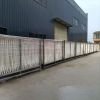 MBR Membrane
MBR Membrane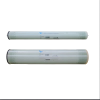 Reverse Osmosis Membrane
Reverse Osmosis Membrane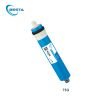 Residential Ro Membrane
Residential Ro Membrane UF Membrane
UF Membrane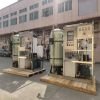 Water Treatment Plant
Water Treatment Plant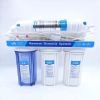 Residential Ro Machine
Residential Ro Machine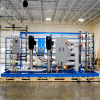 Brackish Ro System
Brackish Ro System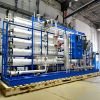 Sea water system/SW RO plant
Sea water system/SW RO plant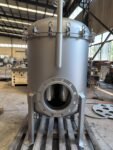 Bag Filter
Bag Filter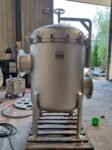 Cartridge Filter
Cartridge Filter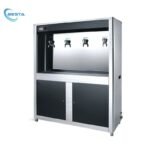 Commercial Water Filtration System
Commercial Water Filtration System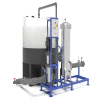 Membrane Cleaning System(CIP)
Membrane Cleaning System(CIP)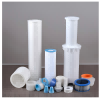 Consumables Accessories
Consumables Accessories
